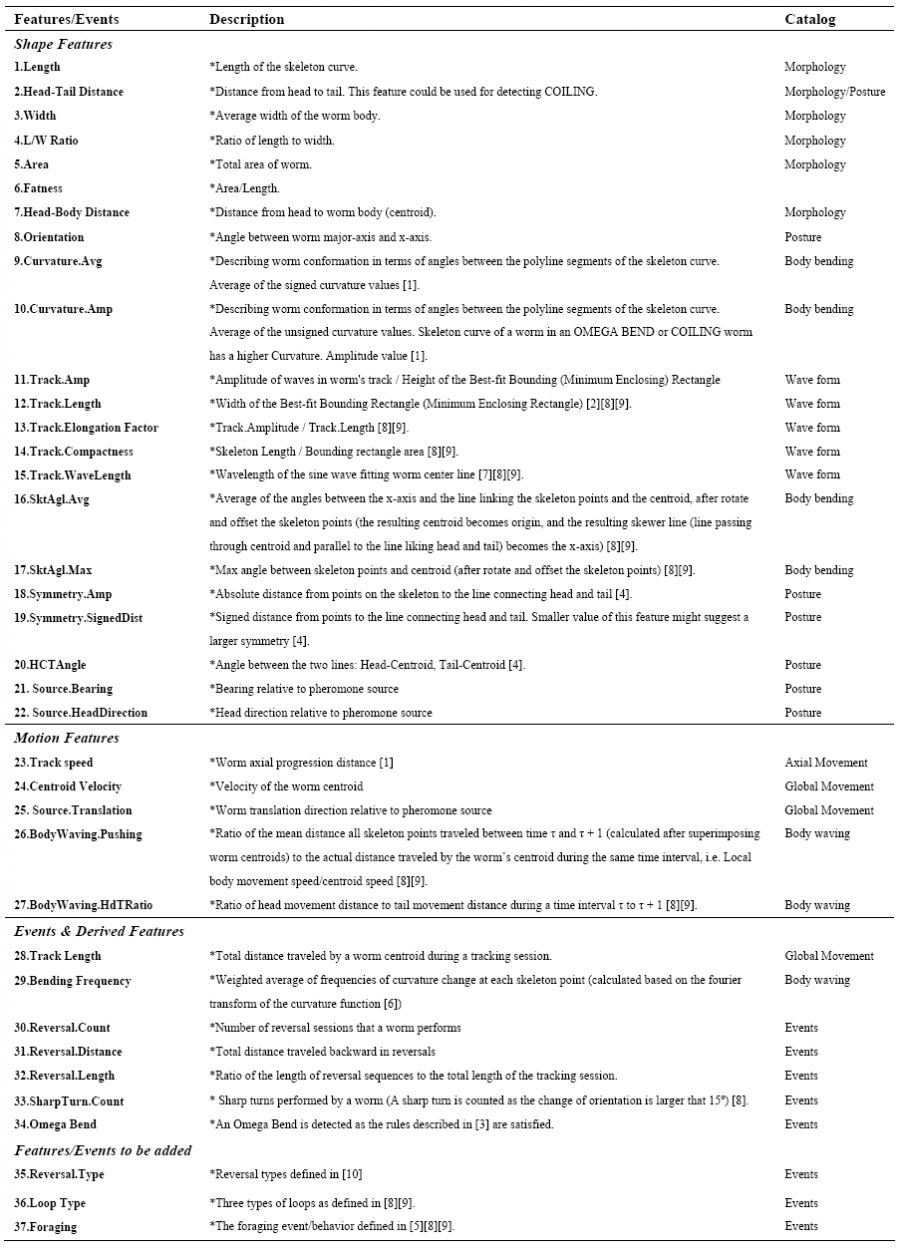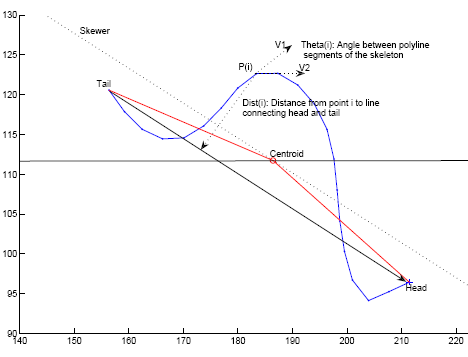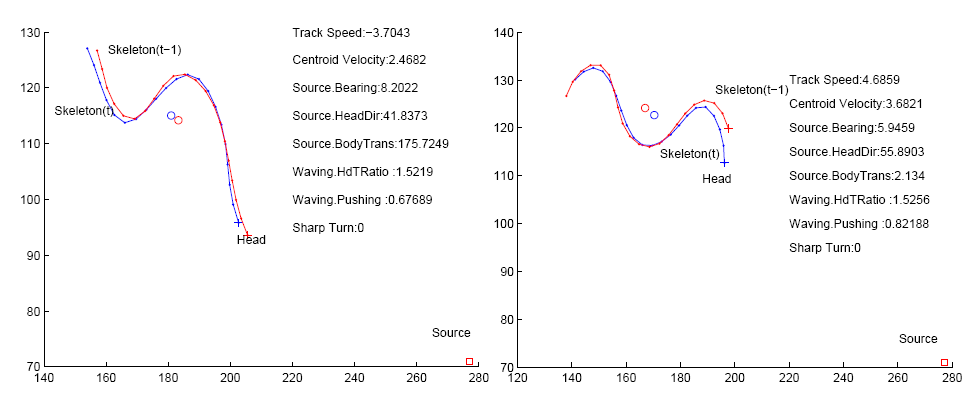Features Events
Contents |
Worm Features and Events
In our system, after tracking the results are fed to the Features and Events module for quantitative analysis. Our automated system quantitates features describing the worm shape(morphology,posture), motion(movement, bending or waving), and events(reversal,omega bend or foraging), etc. Most features are collected from the literature(references below) or requested by the Biologists, and some are based on our old features : Old Worm Features
Features and Events List
All the features and events measured by the automated system are listed below. Details about the computation of some features can be found in next section.

Algorithms and Examples
Track and SktAgl Feature Sets
Both feature sets are based on the skeleton curve after rotation(so the resulting skewer line (line passing through centroid and parallel to the line liking head and tail) becomes the x-axis) and offset(so the resulting centroid becomes the origin).
- Track:
- SkeAgl:
Symmetry and Curvature Feature Sets
Source and Waving Feature Sets
Other Features
- Bending Frequency:
References
- [1] Nicolas Roussel, A Computational Model for C.elegans locomotory behavior: Application to Multi-Worm tracking. Phd Thesis 2007.
- [2] Christopher J Cronin, An automated system for measuring parameters of nematode sinusoidal movement. BMC Genet 2005.
- [3] Huang KM, Cosman P, Schafer WR, Machine vision based detection of omega bends and reversals in C. elegans. Journal of Neuroscience Methods, Vol. 158, Issue 2, pp. 323-336, December 2006.
- [4] Wei Geng, Pamela Cosman, Automatic Tracking, Feature Extraction and Classification of C. elegans Phenotypes. IEEE Transactions on Biomedical Engineering, Vol. 51, No. 10, pp. 1811--1820, October 2004.
- [5] Huang KM, Cosman P, Schafer WR, Automated detection and analysis of foraging behavior in Caenorhabditis elegans. Journal of Neuroscience Methods,2008.
- [6]Ebraheem Fontaine, Automated visual tracking for studying the ontogeny of zebrafish swimming. Journal of Experimental Biology, 2008.
- [7] W.H. Wang, Y. Sun, A Micropositioning System with Real-Time Feature Extraction Capability for Quantifying C. elegans *Locomotive Behavior. IEEE International Conference on Automation Science and Engineering, 2007. CASE 2007.
- [8] Zhaoyang Feng, Quantitative analysis of C. elegans: Algorithms to calculate behavioral and morphological features. BMC Bioinformatics 2004.
- [9] Zhaoyang Feng, An imaging system for standardized quantitative analysis of C.elegans behavior. BMC Bioinformatics 2004.
- [10] Jesse M. Gray, Joseph J. Hill, A circuit for navigation in Caenorhabditis elegans. PNAS 2005.







